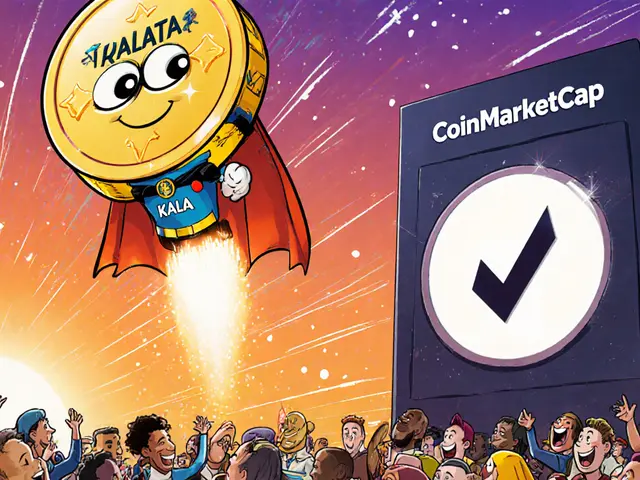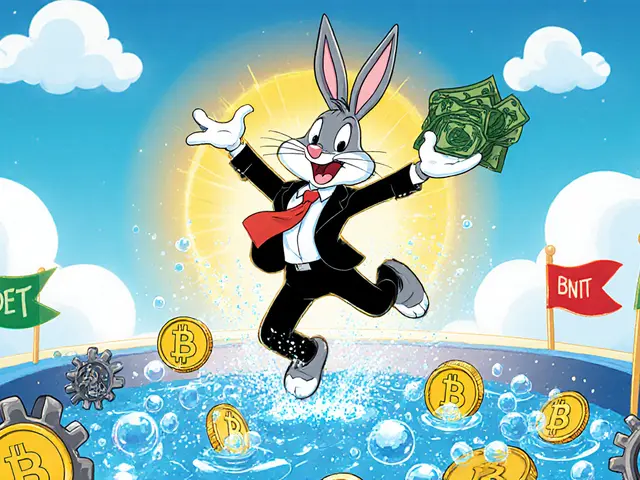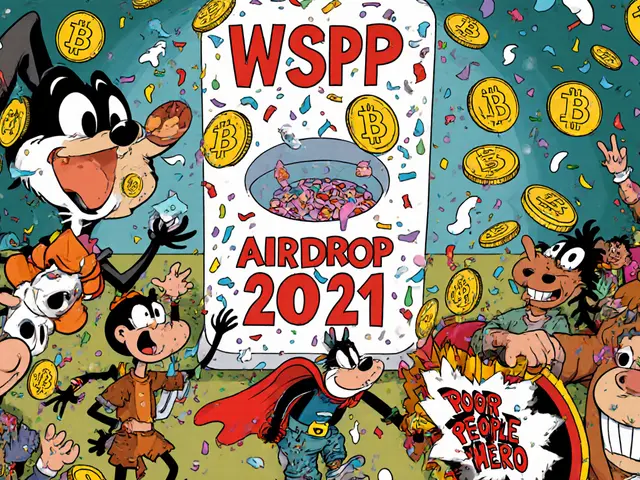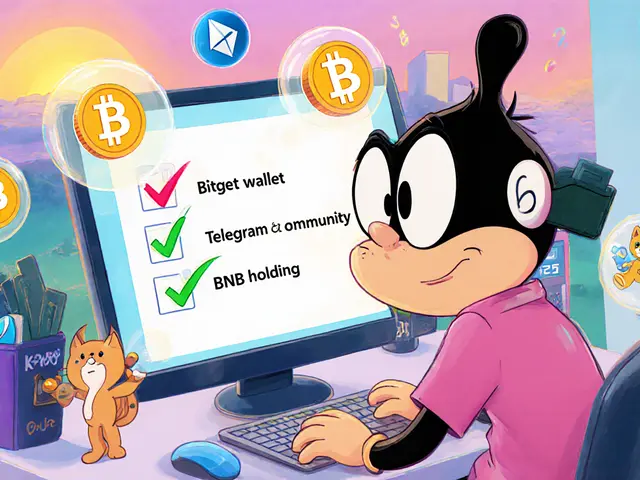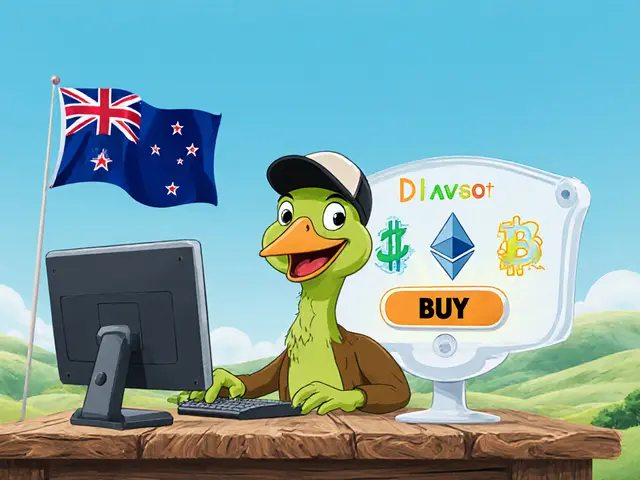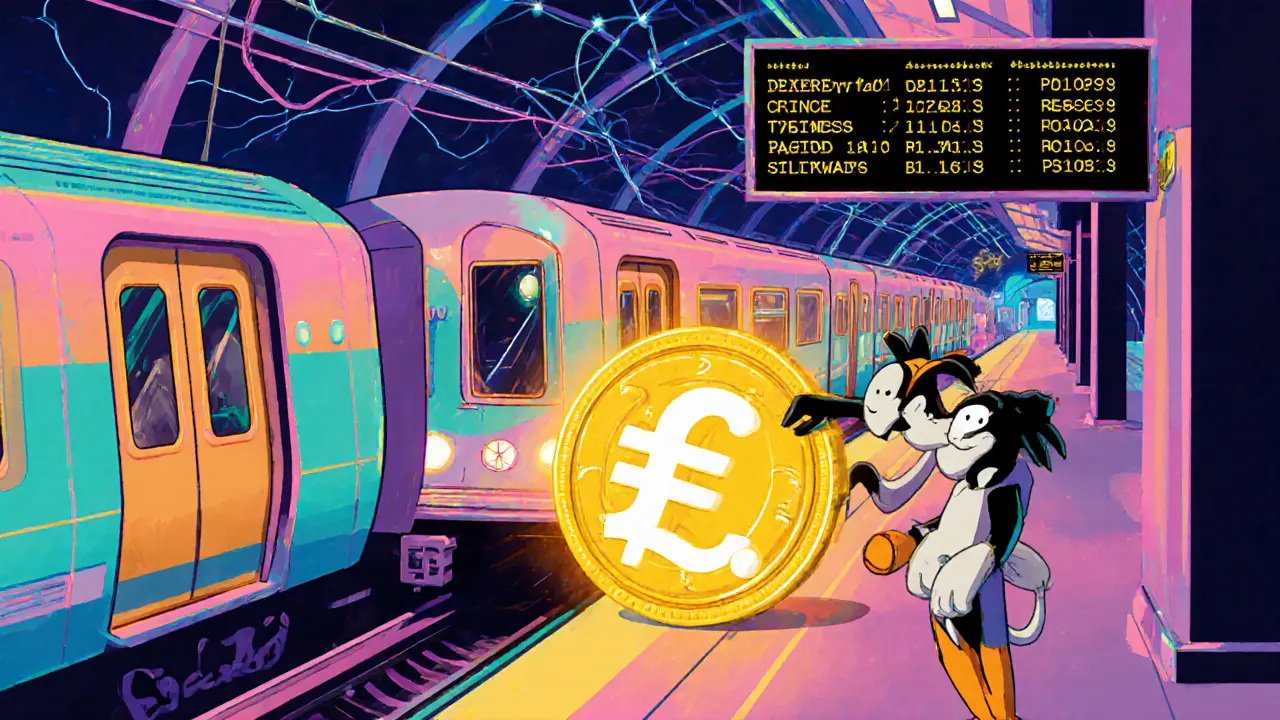
Utility Token Value Calculator
Token Value Analysis
Key Takeaways
- Value comes from real utility, not hype.
- Well‑designed tokenomics (burn, staking, fee share) keep supply in check.
- Network effects and genuine adoption multiply demand.
- Choosing the right blockchain platform saves on fees and improves user experience.
- Compliance and a clear launch roadmap protect the token long‑term.
What Makes a utility token Worth Anything?
Utility token is a digital asset that lives on a blockchain and gives its holder access to a product, service, or function within a specific ecosystem. It doesn’t promise profit shares, voting rights on company decisions, or any claim to the issuer’s assets. Its price comes solely from how often people need the token to do something useful.
Think of a subway card. You buy it, you swipe it, and you get a ride. If the city expands the subway network, your card becomes more valuable because you can travel farther for the same price. The same principle applies to utility tokens: increased usage, more features, and broader ecosystem reach push demand higher.
Designing Tokenomics That Create Demand
Tokenomics is the economic blueprint that tells a token how many of them exist, how they’re released, and what incentives users get for holding or using them.
- Supply control - Fixed caps, gradual emissions, or token‑burn mechanisms keep inflation in check. A burn program that uses a portion of protocol fees to permanently destroy tokens reduces circulating supply, which can lift prices when demand stays steady.
- Staking rewards - When users lock up tokens, they earn extra tokens or fee shares. This encourages long‑term holding and reduces sell pressure.
- Fee share - Allow token holders to claim a slice of transaction or protocol fees. It turns the token into a passive income stream, aligning user interests with the health of the network.
- Buy‑back & burn - Using part of the treasury to repurchase tokens from the market and burn them creates a deflationary loop that boosts scarcity.
When you combine these levers, you build a self‑reinforcing loop: the token gets used, fees are collected, a portion of those fees goes back to token holders or is used to burn tokens, which in turn makes each remaining token a little more valuable.
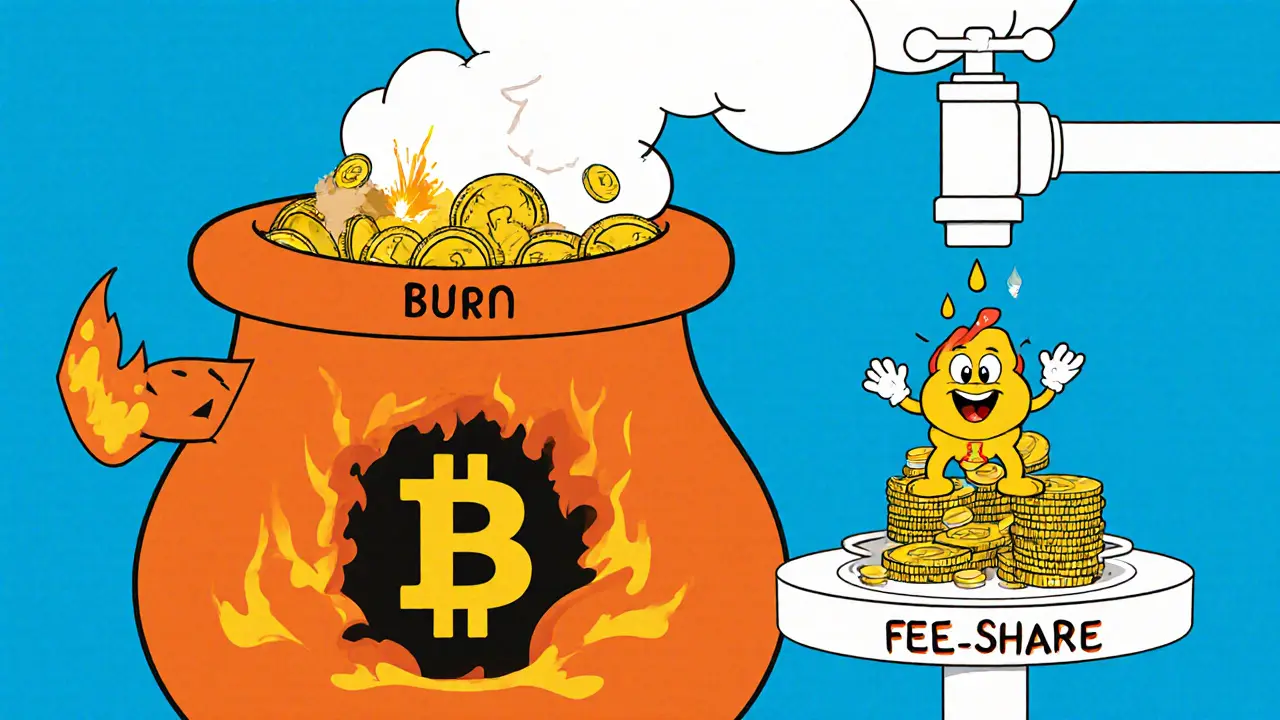
Real‑World Utility Drives Adoption
Without a clear reason to spend a token, nobody will. Identify three core user groups and give each a concrete benefit:
- End‑users - Access to premium features, discounted transaction fees, or exclusive content.
- Developers - Ability to deploy smart contracts, list dApps, or receive grants for building on the platform.
- Validators or node operators - Earn staking rewards for securing the network.
Every interaction should require the token. For example, a decentralized storage service could let users pay for gigabytes with the token, give a 10% discount to token holders, and reward them with extra storage for staking.
Network Effects: The Engine Behind Exponential Growth
Network effects happen when each new participant makes the token more valuable for everyone else.
Two metrics matter most:
- Active user count - More daily users mean more transactions, higher fee collection, and stronger demand for the token.
- Holder distribution - A wide, decentralized distribution reduces the risk of a single whale dumping the token and improves governance credibility.
Design the token so that early adopters gain real advantages (lower fees, exclusive rights) and later adopters still see clear benefits (steady staking APR, fee‑share). This creates a virtuous cycle: early users attract developers, developers attract more users, and the cycle repeats.
Choosing the Right Blockchain Platform
The underlying blockchain determines transaction speed, gas costs, and developer tooling. Below is a quick comparison of the most common platforms for utility tokens.
| Platform | Tx Speed (tps) | Typical Fee | Best Use‑Case |
|---|---|---|---|
| Ethereum | ≈30 | High (often $5‑$30) | DeFi, cross‑protocol composability |
| Binance Smart Chain | ≈100 | Low ($0.01‑$0.05) | High‑volume dApps, gaming |
| Solana | ≈65,000 | Very low (<$0.001) | Real‑time gaming, high‑frequency trading |
| Polygon | ≈7,000 | Low ($0.001‑$0.01) | Layer‑2 scaling for Ethereum dApps |
| Avalanche | ≈4,500 | Low‑moderate ($0.01‑$0.1) | Custom sub‑nets, enterprise solutions |
If your token needs deep DeFi integration, Ethereum’s ecosystem outweighs its fees. If you’re building a fast‑paced game, Solana or BSC will give you the throughput you need without burning users’ wallets.
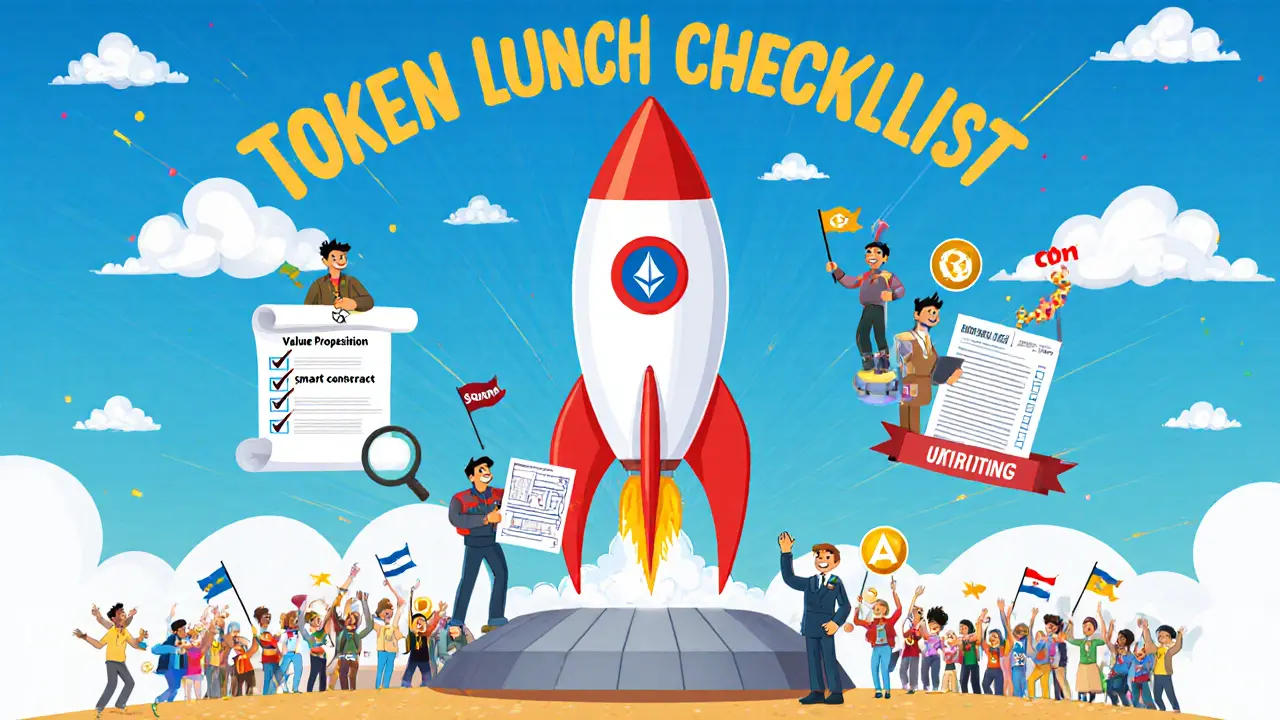
Long‑Term Incentive Alignment
Beyond the launch, keep the ecosystem healthy with these practices:
- Team vesting - Release founder and employee tokens over 3‑4years to avoid a massive dump after the ICO.
- Treasury allocation - Reserve a portion of tokens for grants, community contests, and future feature development.
- Governance decentralization - Gradually hand decision‑making power to token holders via voting mechanisms. Governance tokens let users propose upgrades, adjust fee structures, or vote on treasury spending.
- Sustainable yield - Offer yield‑generating services (e.g., liquidity mining) that don’t rely on endless new user inflow.
When holders see a clear path to earn and influence, they become advocates rather than speculators. That advocacy fuels organic growth and strengthens network effects.
Launch Checklist & Compliance Basics
Before you press “Deploy,” run through this quick list:
- Define the token’s purpose - Write a one‑sentence value proposition (e.g., “Token X unlocks discounted transaction fees on Platform Y”).
- Pick the blockchain - Use the comparison table above to match your utility to a chain.
- Write the smart contract - Follow the ERC‑20, BEP‑20, or SPL standards. Include pausable and access‑control functions for security.
- Design tokenomics - Set total supply, emission schedule, burn rate, and staking APR.
- Plan allocation - Split tokens among team (10‑15%), investors (10%), community rewards (30%), treasury (30%), and ecosystem partners (15%).
- Compliance check - Identify jurisdiction, confirm the token is a utility (not a security), and file any needed registrations.
- Community building - Launch a whitepaper, create a Discord/Telegram channel, and start a bounty program.
- Audit the contract - Hire a reputable firm to run a security audit and publish the report.
Skipping any of these steps can lead to regulatory trouble or a loss of trust, both of which instantly crush demand.
Keeping Demand Alive After Launch
Even with perfect tokenomics, demand can fade if users stop interacting. Here’s how to keep the heat on:
- Regular feature releases - Each new product upgrade should require the token, creating fresh use cases.
- Seasonal incentives - Limited‑time staking bonuses or fee‑discount events spur short‑term spikes that feed long‑term habit formation.
- Partnership integrations - Allow other dApps to accept your token for services, expanding the addressable market.
- Data‑driven iteration - Track active wallets, transaction volume, and churn rates. Adjust burn rates or reward structures based on real‑world behavior.
When the community sees continuous value, they keep buying, holding, and using the token-exactly the demand loop you set out to create.
FAQ
What is the difference between a utility token and a security token?
A utility token gives access to a product or service within a blockchain ecosystem, while a security token represents ownership or a share in profits. Regulators treat the two very differently; utility tokens are generally not subject to securities law if they truly serve a functional purpose.
How does token burning affect price?
Burning permanently removes tokens from circulation, reducing supply. With demand staying constant, basic economics dictate that each remaining token becomes scarer, which can push the market price upward.
Which blockchain is best for a low‑fee utility token?
For low‑fee environments, Binance Smart Chain, Polygon, or Solana usually outperform Ethereum. Choose the chain that also matches your target audience’s development tools and wallet support.
What are common pitfalls in tokenomics design?
Common mistakes include over‑inflating supply, missing deflationary mechanisms, ignoring staking incentives, and allocating too many tokens to the team without vesting. These errors often lead to price crashes and community loss of trust.
How can I encourage long‑term holding?
Provide real, recurring benefits: staking rewards, fee discounts, access to premium features, and a share of protocol revenue. The more valuable the token becomes for day‑to‑day activity, the less likely holders are to sell.

